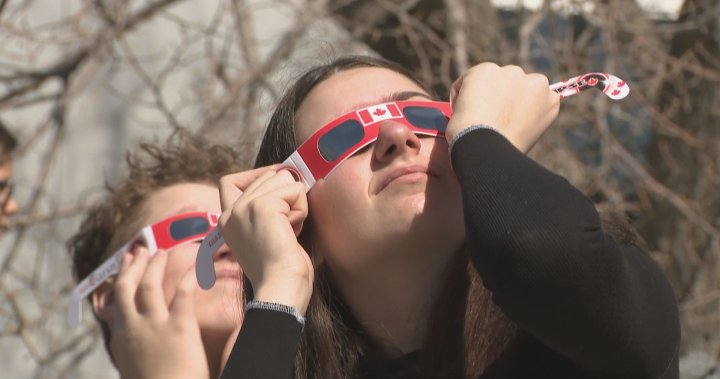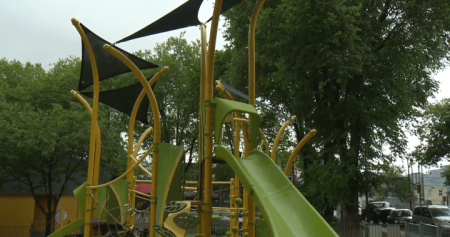On Monday, people from all over the world gathered outside to witness a solar eclipse, including in Saskatchewan, although a total solar eclipse was not visible in that region. Despite this, many eager onlookers flocked to the Saskatchewan Science Centre in Regina to celebrate the event. According to the Royal Astronomical Society of Canada, during the eclipse, the moon covered just over 40 percent of the sun in Saskatchewan. Kevin Fenwick, a member of the Royal Astronomical Society of Canada Regina Centre Executive Committee, described the phenomenon as looking like “Pac-Man took a big chunk out of the sun as the moon moves in front of the sun.” He explained the unique correlation between the size of the moon and the sun, making eclipses on Earth fascinating events when the moon covers the disk of the sun.
For those who attended the event at the science centre, it was a memorable and can’t-miss experience. Residents like Josh Daly expressed excitement about witnessing the eclipse, noting that it was a once-in-a-lifetime event that they did not want to miss. Another attendee, Nora Ashton, a student who skipped school to watch the eclipse, hilariously described the sun and moon as looking like cheese. She also mentioned that her father’s interest in astronomy influenced her participation in the eclipse viewing. The next opportunity for Saskatchewan to see the moon fully block out the sun is not until August 2, 2044, according to NASA’s projections. The province’s last experience with a total eclipse was in 1979 when the moon blocked the sun over the southeastern corner of Saskatchewan.
Overall, the solar eclipse was a remarkable event that brought people together in Saskatchewan and around the world to witness a rare astronomical occurrence. Despite not being in the path of totality, residents were still able to enjoy the sight of the moon partially covering the sun. The enthusiasm and excitement among attendees at the Saskatchewan Science Centre in Regina highlighted the significance of the event, with many considering it a once-in-a-lifetime opportunity. While the next chance to witness a full eclipse in Saskatchewan may be decades away, the memories of this partial eclipse will surely last a lifetime for those who were able to experience it firsthand.
The Royal Astronomical Society of Canada’s explanation of the unique alignment of the moon and sun during eclipses added a layer of scientific understanding to the event. Observers like Kevin Fenwick provided insights into the phenomena, describing the visual effect of the moon covering the sun as similar to a video game character taking a bite out of a celestial body. This scientific explanation, along with the personal anecdotes shared by attendees, enriched the eclipse experience for everyone involved. The eclipse also served as an opportunity for students like Nora Ashton to learn more about astronomy and engage with the natural world in a hands-on way, further emphasizing the educational value of such rare celestial events.
In conclusion, the solar eclipse in Saskatchewan was a momentous occasion that captivated people of all ages and backgrounds. From seasoned astronomers to curious students, the event brought together individuals with a shared appreciation for the wonders of the universe. The anticipation and excitement leading up to the eclipse, coupled with the awe-inspiring sight of the moon passing in front of the sun, created a sense of unity and wonder among those who witnessed the event. As residents in Saskatchewan reflect on their experience of the eclipse, they can look forward to future opportunities to witness similar celestial events and continue their exploration of the mysteries of the cosmos. Ultimately, the solar eclipse served as a reminder of the beauty and complexity of the natural world, inspiring a sense of curiosity and appreciation for the wonders of the universe.















